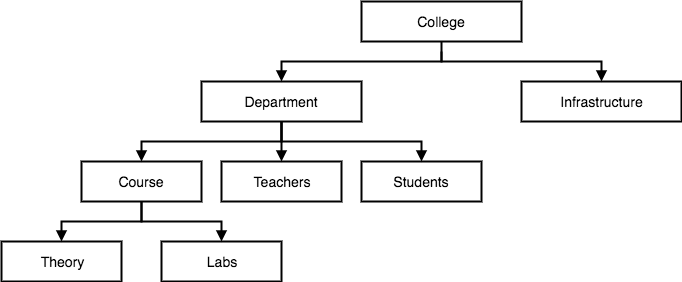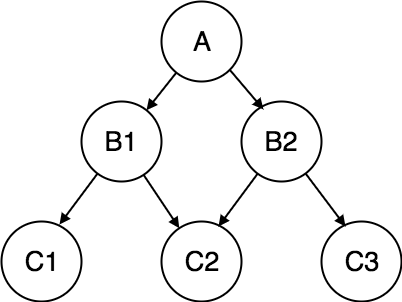DBMS- Data Models
DATA MODELS
Data models define how the logical structure of a database is modeled. Data Models are fundamental entities to introduce abstraction in a DBMS. Data models define how data is connected to each other and how they are processed and stored inside the system.
The very first data model could be flat data-models, where all the data used are to be kept in the same plane. Earlier data models were not so scientific, hence they were prone to introduce lots of duplication and update anomalies.
Entity-Relationship Model
Entity-Relationship (ER) Model is based on the notion of real-world entities and relationships among them. While formulating real-world scenario into the database model, the ER Model creates entity set, relationship set, general attributes and constraints.
ER Model is best used for the conceptual design of a database.
ER Model is based on −
-
Entities and their attributes.
-
Relationships among entities.
These concepts are explained below.
-
Entity − An entity in an ER Model is a real-world entity having properties called attributes. Every attribute is defined by its set of values called domain. For example, in a school database, a student is considered as an entity. Student has various attributes like name, age, class, etc.
-
Relationship − The logical association among entities is calledrelationship. Relationships are mapped with entities in various ways. Mapping cardinalities define the number of association between two entities.
Mapping cardinalities −
- one to one
- one to many
- many to one
- many to many
Relational Model
The most popular data model in DBMS is the Relational Model. It is more scientific a model than others. This model is based on first-order predicate logic and defines a table as an n-ary relation.
The main highlights of this model are −
- Data is stored in tables called relations.
- Relations can be normalized.
- In normalized relations, values saved are atomic values.
- Each row in a relation contains a unique value.
- Each column in a relation contains values from a
- same domain.
Hierarchical Model
This database model organises data into a tree-like-structure, with a single root, to which all the other data is linked. The heirarchy starts from the Rootdata, and expands like a tree, adding child nodes to the parent nodes.
In this model, a child node will only have a single parent node.
This model efficiently describes many real-world relationships like index of a book, recipes etc.
In hierarchical model, data is organised into tree-like structure with one one-to-many relationship between two different types of data, for example, one department can have many courses, many professors and of-course many students.

Network Model
This is an extension of the Hierarchical model. In this model data is organised more like a graph, and are allowed to have more than one parent node.
In this database model data is more related as more relationships are established in this database model. Also, as the data is more related, hence accessing the data is also easier and fast. This database model was used to map many-to-many data relationships.
This was the most widely used database model, before Relational Model was introduced.

Comments
Post a Comment